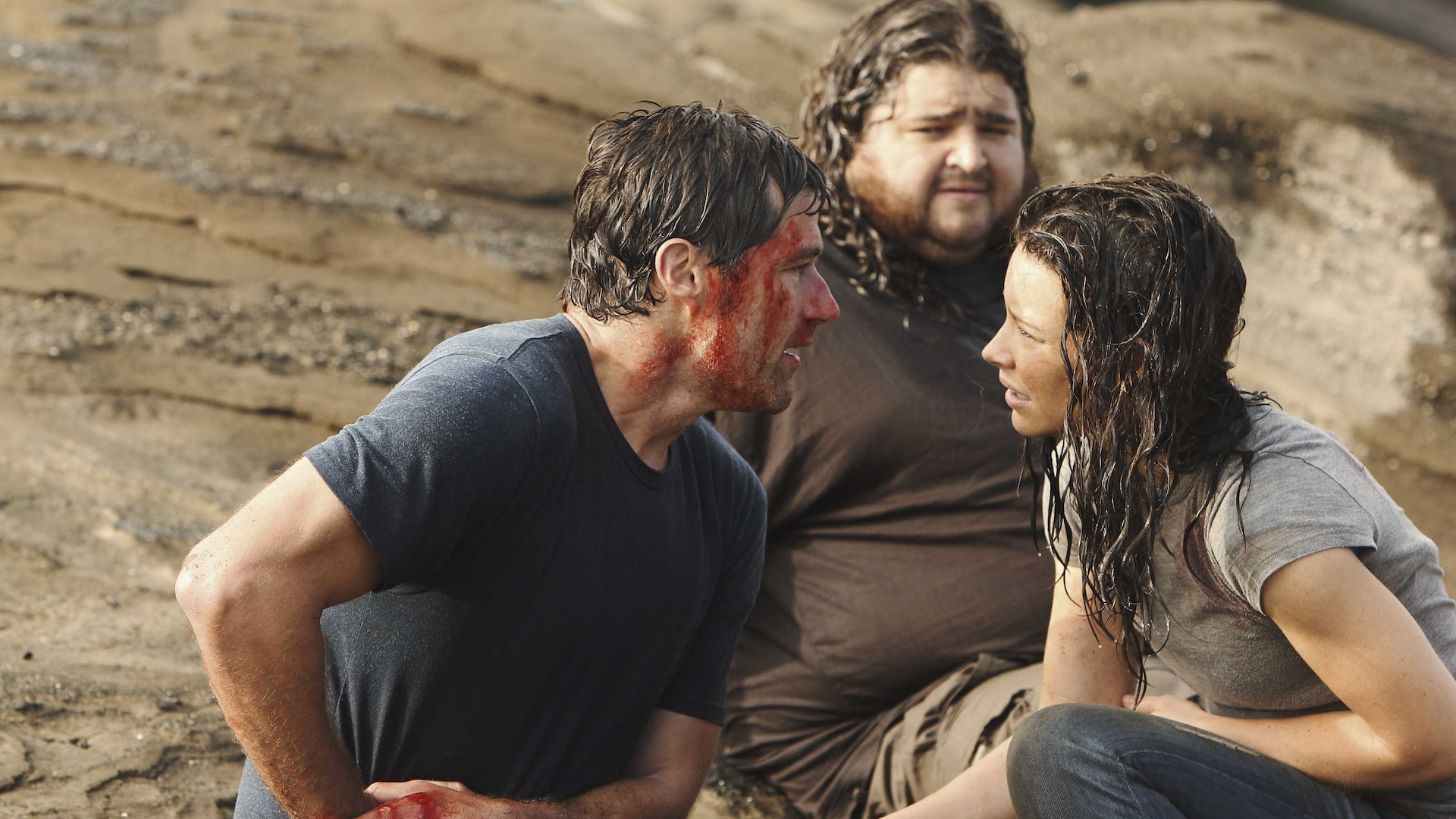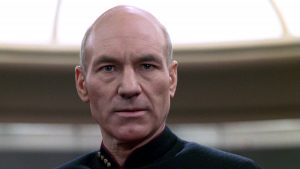
This article contains Lost spoilers.
In a world where AI deepfakes can crash markets and fake news can disrupt elections, preserving the truth is more important than ever. Of course, that’s something Lost diehards have understood for a long time. That’s because fans of ABC’s early 2000s sci-fi drama know that misinformation can do something far worse than endanger the fate of the world: it can cause someone to misinterpret the ending of your favorite TV show.
The final episode of Lost first premiered on Sunday, May 23, 2010. From the moment that credits began to roll on “The End,” folks have continually misunderstood what actually happened. The phenomenon began that very night, with none other than the paper of record, The New York Times, publishing an episodic review that misinterpreted a key element of the finale. Over the years, that initial misinterpretation has evolved into an unshakable pop cultural meme: “Lost? Isn’t that the show where they were dead the whole time?” No, hypothetical strawman. No, it is not.
Every time I hear that incorrect assertion, it sends a shiver down my spine. Because I know exactly what the next 10-to-20 minutes of my life will look like as I vainly try to explain the Lost ending. Now that Lost has arrived on Netflix and re-entered the public consciousness once again, let’s avoid awkward in-person conversations and get the definitive explanation of the Lost ending here in digital ink. What follows is a primer on Lost, a brief explanation of its whole mythos, and an acknowledgement of why it’s hard for so many to process.
The Mythology of Lost Explained
It’s impossible to understand the ending of Lost without contextualizing the mythology of the show. The series isn’t about only one mystery that needs to be addressed in the finale but rather many questions that are raised and answered throughout the entirety of the show’s six-season, 121-episode run. What’s with the polar bear? Who is the DHARMA Initiative? Why is the Island weird? Guys, where are we? Thankfully, the answers to those questions come down to one originating point: Jacob.
Simply put: Lost is the story of one ancient deity’s very long, very circuitous retirement plan. The ancient deity in question is a being named Jacob (played by Mark Pellegrino). Jacob is initially mentioned in season 3 (which is, not coincidentally, the first season to air after showrunners Damon Lindelof and Carlton Case successfully negotiated an end date for the show with ABC). At first it’s not clear if Jacob is real or if he is a fairy tale concocted by Benjamin Linus (Michael Emerson) and The Others to keep all islanders in line. Jacob is eventually revealed via flashback at the beginning the season 5 finale, and then promptly killed in that same episode’s conclusion. Season 6’s “Across the Sea” provides the majority of his backstory.
Jacob’s mother Claudia arrived on the Island via shipwreck in the distant past (it’s unclear exactly when but Claudia speaks Latin if that gives you any idea). After giving birth to Jacob and his fraternal twin, Samuel* (Titus Welliver), Claudia encounters a mysterious unnamed woman known only as Mother (Allison Janney), who kills her and takes Jacob and Samuel to raise as her own.
*Samuel is never given a name in the show and only ever referred to as “The Man in Black.” He was called Samuel in the casting call for the role though, so we’re using that for easier reading.
Mother confirms to Jacob what viewers already suspect: the Island is a special place – one of only a few like it in the world. That’s because, deep in the heart of the Island, there is a light of great importance. The light could be supernatural or merely a type of electromagnetism beyond human understanding, that’s up to the audience to discern. Regardless of its origin, if this light were to ever go out on the Island, it would go out everywhere and lead to widespread devastation.
Mother has been the keeper of the light for eons and now it’s someone else’s turn to pick up the slack. To that end, she bestows her power of immortality unto Jacob and gives him the role as the protector of the Island. Samuel, who has a more dismal opinion of both Mother and the primitive human beings who occupy the Island, rebels and kills Mother. In the ensuing fight, Jacob throws his brother into a river that leads directly to the heart of the Island. Exposure to the Island’s core turns Samuel into a monster…a smoke monster.
From that moment on, Jacob and Samuel become (im)mortal enemies. Jacob continues to protect the Island and aims to prove to Samuel that humanity is fundamentally good, while Samuel seeks to escape the Island and prove to Jacob that human beings have no merit. Due to his nature as a light-infused smoke monster, if Samuel were to ever find a way to escape the Island, the world as we know it would end. Jacob can’t keep up this fight with his brother forever, so he begins to draw people to the Island as “candidates” (re: the main characters of the show) to replace him, while Samuel endeavors to trick them into killing Jacob.
Most of the Lost‘s high strangeness can be attributed this fraternal conflict and the mysterious light at the Island’s core. And, to answer all the questions from the beginning of this section – we’re on the Island, the Island is weird because of the light at its core, the DHARMA Initiative wants to study the Island because it’s weird, and the polar bears are on the Island because DHARMA was studying how they respond to electromagnetism.
What Happens in the Lost Finale?
With all of those questions answered by the time “The End” rolls around, all that’s left for Lost is to put on a good old-fashioned adventure movie. Samuel now inhabits the body of John Locke (it’s a long story) and has accepted that he is never leaving that Island. He opts to destroy it instead.
A true believer in the real John Locke (Terry O’Quinn) and the Island’s power, hero Jack Shephard (Matthew Fox) decides to go along with Samuel’s plan to extinguish its light, putting his faith in the fact that they will defeat him. Since former Swan station occupant Desmond (Henry Ian Cusick) has experienced the most exposure to the Island’s electromagnetic force already, everyone agrees to send him into the heart of the Island to investigate the light.
Down in a watery cave, Desmond discovers that the heart of the Island isn’t so much a light as it is a plug (which echoes a simile Jacob himself used to Richard Alpert in season 6 episode 9 “Ab Aeterno”). Once Desmond removes the enormous stone plug from the ground, the Island begins to crumble. At the same time, it becomes clear that the removal of the Island’s plug has made Samuel mortal once again. Jack and Samuel engage in an epic knife fight, which ends with Kate finally shooting and killing the monster.
With the Island still crumbling and Desmond rendered unconscious, someone has to crawl down into the heart and “replug” the Island at great personal risk. Jack chooses to perform the heroic act, despite the fact that Jacob already selected him as his replacement. Before Jack descends, he makes Hugo “Hurley” Reyes (Jorge Garcia) his replacement as the steward of the Island. Ben Linus decides to stay behind and be Hurley’s on-Island helper.
After entering the Cave and setting the Island straight, the mortally wounded (from a knife fight injury and electromagnetism) Jack crawls into the jungle and peacefully closes his eyes for the last time. As he does, he sees a plane take off from the Island carrying home Kate (Evangeline Lilly), Sawyer (Josh Holloway), Claire (Emilie de Ravin), Richard (Nestor Carbonell) Miles (Ken Leung), and Frank (Jeff Fahey).
Why Do People Think The Characters Were Dead The Whole Time?
So…were the characters dead the whole time? The answer to that question is conclusively, definitively, unambiguously: No. The characters of Lost were not dead the whole time. The Island wasn’t heaven, hell, purgatory, or any other celestial plane. To borrow from the show’s own lexicon: whatever happened, happened. There is a reason, however, why some people mistakenly believe that the characters were dead the whole time. That’s because the big twist of the final episode is that they were indeed dead some of the time. Pull up a chair, this may take a minute.
First, we have to go back(!) to Lost‘s penultimate season. Season 5 features many of the central characters time traveling to 1977 and embedding with the beginning of the DHARMA Initiative’s research on The Island. Believing they’ve been sent back in time to undo all the tragedy they’ve experienced thus far, some of the temporally-displaced castaways form a plan.
On the Island, there happens to be a hydrogen bomb called “Jughead” left behind by the U.S. army in the ’50s. Jack and others theorize that if they detonate the bomb on the construction site of a future DHARMA station known as “The Swan,” they will be sent back to their original lives as if none of this ever happened. After all, they know from their present day knowledge that The Swan once experienced something called “The Incident.” Perhaps they are that Incident.
Following the detonation of Jughead in the season 5 finale, season 6 takes place in two timelines. In one of them, Jughead succeeded in only getting the characters back to their present (2007) on the Island. The other, however, initially appears to have proven Jack’s theory right. Most episodes of Lost feature a flashback to a certain character’s life before the Island. Season 4 and 5 then introduced “flash-forwards” of their lives after they left the Island. The “flash-sideways” of season 6 depict an alternate universe in which Oceanic Flight 815 never crashed and the castaways never made it the Island.
As characters like Jack, Kate, Hurley, and Locke go about their day-to-day lives outside the Island, viewers naturally conclude that this flash-sideways timeline is the intended consequence of The Incident. The detonation of Jughead didn’t just get Jack and co. back to the present, it also created an alternate universe – something that the comic fan writers of Lost would surely be familiar with.
What “The End” reveals, however, is that these flash-sideways storylines have nothing to do with Jughead. They are actually a purgatory that the characters enter into after they die so that they can find one another and “move on.” In the religious cosmology of Lost, one cannot enter into the afterlife alone (which is in keeping with the show’s favorite catchphrase “live together, die alone”). So whenever someone dies, they have to engage with a life-like purgatory until they find all of their buddies and move on together.
Since the concept of “time” doesn’t exist in the afterlife, it doesn’t matter when someone dies in relation to their loved ones – they will all arrive at the same moment and get to work realizing that they are dead and then going on to find one another. Indeed, Lost’s flash-sideways purgatory features characters who died early on in the show’s run (Boone, Shannon), characters who died in the final season (Sayid, Jin, Sun, Jack), and characters who haven’t died yet at all but presumably will one day because we all do (Kate, Sawyer, Hurley).
These aren’t details that the viewer is left to discern for themselves, by the way. Clearly sensing the potential for confusion, the episode’s writers, Lindelof and Cuse, craft a scene within the flash sideways in which the ghost of Jack’s father, Christian Shephard, clearly explains the rules of purgatory.
“I’m real. You’re real. Everything that’s ever happened to you is real. All those people in the church, they’re real too. Everyone dies sometime, kiddo. Some of them before you, some of them long after you. There is no ‘now’ here. This is a place that you all made together so that you could find one another. The most important part of your life was the time you spent with these people. That’s why all of you are here. Nobody does it alone, Jack. You needed all of them and they needed you. To remember. And to let go.”
With Christian’s helpful expository monologue in mind, how is it that the myth of “they were dead the whole time” persists to this day? Lost must bear some of the blame for that itself.
Despite producers’ consistent assertions to the contrary, “the Island is purgatory” remained one of the most popular theories regarding the show for the entirety of its run. By introducing the concept of purgatory at all, even if the Island itself wasn’t the purgatory in question, Lost was playing with fire. It’s easy to see how “there’s a purgatory eventually depicted on Lost” became “they were dead the whole time and the Island was purgatory” in the popular imagination.
Is Lost’s Ending Bad?
The Lost finale is good, actually! Like the best TV shows, it understands that what matters most in an ending is emotional resonance. The pathos of “The End” is on point, with the episode featuring touching reunions, well-paced action, and plenty of thrills.
In a way, Lost was the victim of its own success. The questions it raised were too compelling to ever be answered. Somewhere along its run, the central mystery of the show went from “what is this weird Island?” to “what is the meaning of life?” For as brilliant a writer as Lindelof has proven himself to be, that’s still well above his pay grade.
Additionally, Lost taught many people to think of episodic storytelling in a different way.* Throughout much of TV history, finales were largely afterthoughts. Sure, a nice finale of a long-running show would be appreciated, but one’s enjoyment of an entire series wouldn’t be contingent on its ending. As its own writers were horrified to find out when the show achieved success, the Lost ending would have to be different. The Lost ending really would matter.
*Of course, Lost wasn’t the first heavily-serialized TV show, with notable sci-fi efforts like The Prisoner and Babylon 5 coming before it. But, by the nature of its immense popularity, Lost reached and influenced audiences who were more familiar with the traditional network format.
The idea that a show needed to “stick the landing” was almost unheard of pre-Lost and a significant part of its legacy is wrapped up in introducing that concept to the streaming era. For better or worse, Lost steered a “make-it-up-as-you-go-along” medium into something more deliberate. And it had to endure that shifting of expectations within its own run. With all that in mind, it’s a small miracle that “The End” is coherent, let alone good.
Remember the Lost finale as fondly or as poorly as you’d like, but do be sure to remember it correctly.
All six seasons of Lost are available to stream on Netflix now.
The post Lost Ending Explained: What Really Happened and Why Everyone Still Gets It Wrong appeared first on Den of Geek.







